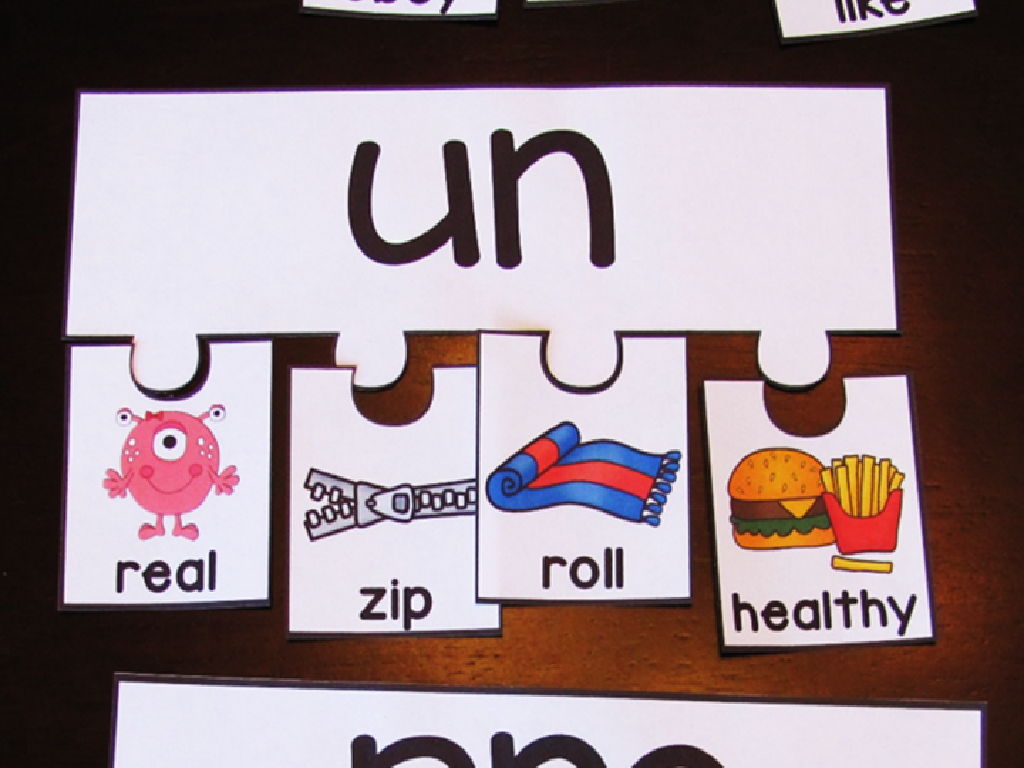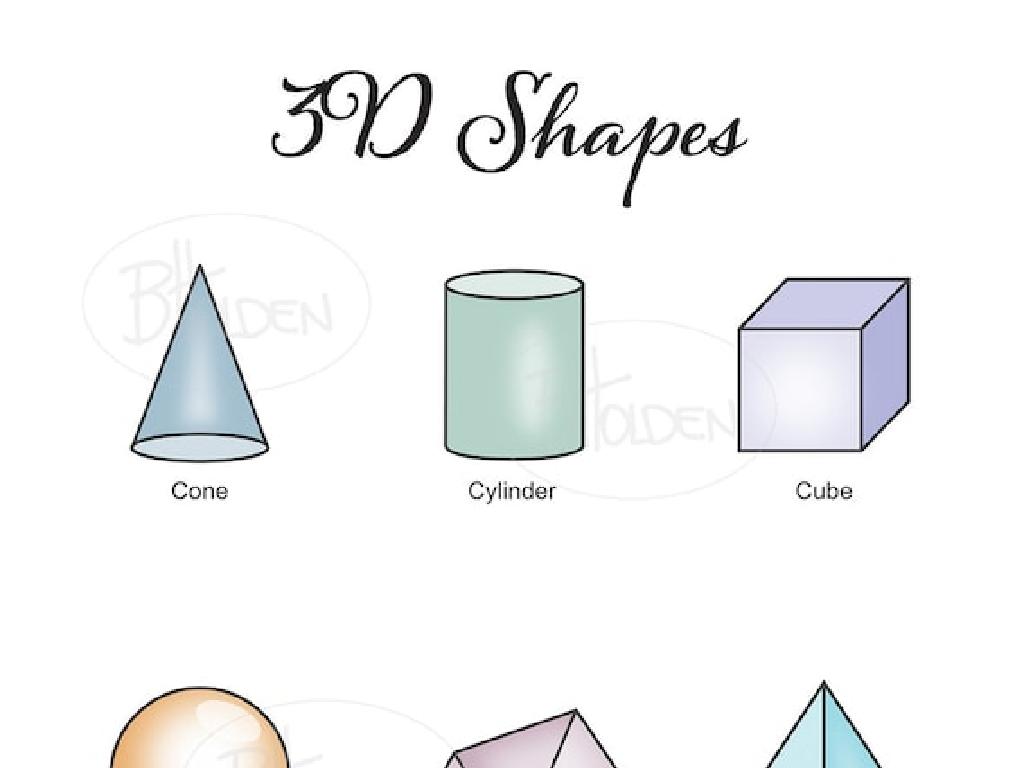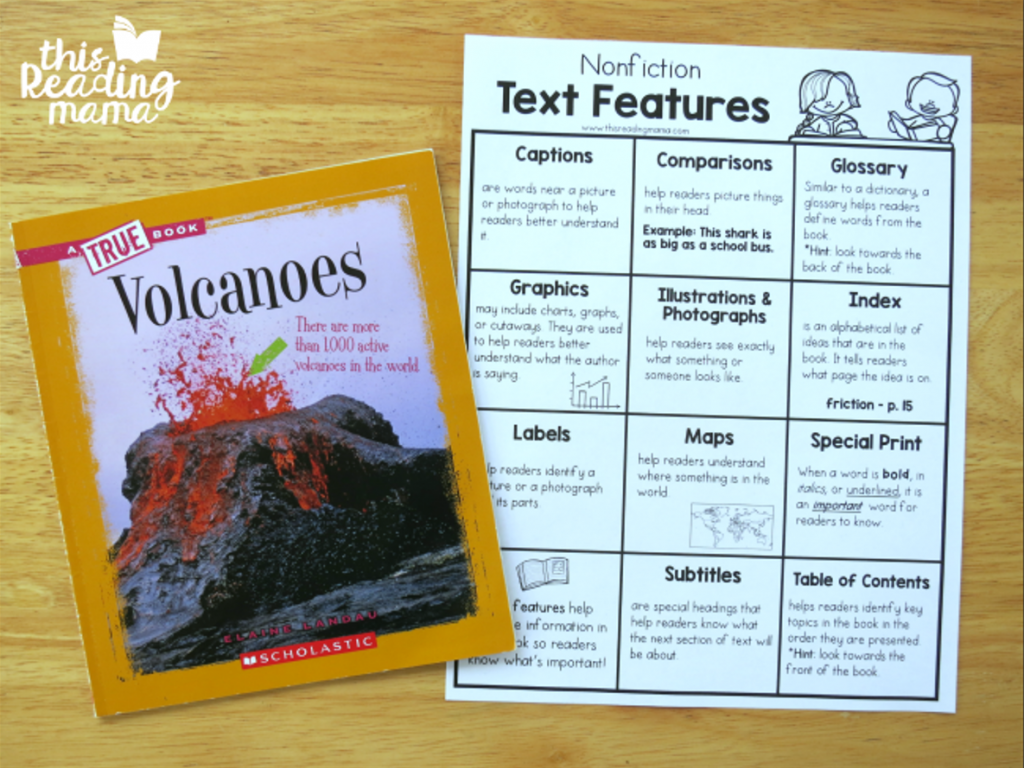Read An Animal Pedigree Chart
Subject: Science
Grade: Third grade
Topic: Heredity
Please LOG IN to download the presentation. Access is available to registered users only.
View More Content
Introduction to Heredity in Animals
– Heredity: Passing down traits
– What is Heredity?
– Heredity is how animals get traits from parents
– Traits animals inherit
– Fur color, beak shape, and sounds are traits
– Exploring examples
– Discuss inherited traits in dogs, birds, etc.
|
This slide introduces the concept of heredity to third-grade students, explaining that heredity is the process through which traits are passed from parents to their offspring. Use simple language to define heredity and discuss various hereditary traits found in animals, such as fur color in dogs or beak shape in birds. Provide clear examples to help students connect the concept to real-life observations. Encourage students to think of traits they may have noticed in pets or animals they are familiar with. The goal is to build a foundational understanding of heredity that will be further explored in subsequent lessons.
Exploring Pedigree Charts in Animals
– What’s a pedigree chart?
– A tool to trace traits in animal families
– Symbols and lines meaning
– Circles, squares, and lines represent family members and their connections
– Steps to read a pedigree chart
– Identify symbols, then follow the lines to see trait inheritance
– Practice with a sample chart
|
Introduce the concept of a pedigree chart as a way to visualize the inheritance of traits in animals across generations. Explain that different shapes represent males and females, and lines show relationships and the flow of genetic information. Guide students through the process of reading a pedigree chart by starting with identifying the symbols and then understanding how the lines connect family members. Encourage students to practice with a sample chart to solidify their understanding. This activity will help them grasp the basics of heredity and the importance of genetics in animal breeding.
Understanding Pedigree Charts
– Circles and squares meaning
– Circles are females, squares are males
– Shaded shapes significance
– A shaded shape means the animal has a specific trait
– Lines show family ties
– Lines connect family members in the chart
– Interpreting the chart
|
This slide introduces students to the basic symbols used in animal pedigree charts, which are visual tools for understanding heredity and family relationships in animals. Circles represent females and squares represent males. When a shape is shaded, it indicates that the animal has a particular trait, such as a specific fur color. Lines connecting the shapes illustrate the relationships between family members, such as parent to offspring or between siblings. Encourage students to practice by creating simple pedigree charts with common family pets as examples. This will help them grasp the concept of heredity and the importance of genetics in animal breeding.
Reading an Animal Pedigree Chart
– Understanding generations
– Generations are labeled as P, F1, F2, etc.
– Recognizing inheritance patterns
– Traits can skip generations or appear in all
– Practice with a sample chart
– Use a provided chart to spot traits
– Identifying individual traits
– Look for shaded or unshaded shapes
|
This slide introduces students to the basics of reading an animal pedigree chart, an important tool in understanding heredity. Start by explaining how generations are labeled on the chart, with ‘P’ representing the parent generation, followed by ‘F1’ for the first filial generation, and so on. Discuss how certain traits can be traced through the generations, noting patterns such as traits that skip generations or are present in every generation. Provide a sample pedigree chart for students to practice identifying these patterns and traits. Emphasize the importance of recognizing whether shapes (usually circles for females and squares for males) are shaded or unshaded to indicate the presence or absence of a trait. The activity will help solidify their understanding of heredity and how traits are passed down through generations.
Case Study: Bunny Family Pedigree
– Inherited traits in bunnies
– Traits like ear length are passed from parent bunnies to baby bunnies.
– Analyze bunny ear lengths
– Look at the pedigree chart to see ear size in the bunny family.
– Discuss long-eared bunnies
– Find which bunnies have long ears and think about why that is.
– Understanding genetics
– Genetics is the study of how traits are inherited.
|
This slide introduces students to the concept of heredity using a case study of a bunny family. It aims to help students understand how certain traits, such as ear length, are passed down from parents to offspring. By analyzing a pedigree chart, students will visually connect the inheritance of long ears in bunnies. The discussion will focus on identifying which bunnies have long ears and exploring the reasons behind this trait inheritance. This activity will serve as a foundation for understanding genetics and heredity in a fun and engaging way. Encourage students to ask questions and make predictions before revealing the answers.
Activity: Create Your Own Animal Pedigree Chart
– Pick an animal and a trait
– Learn symbols for family members
– Circles for females, squares for males
– Create your pedigree chart
– Use your symbols to show parents and offspring
– Track the trait through generations
– Color in symbols if they have the trait
|
This activity is designed to help students understand how traits are passed down through generations. Students will choose an animal, such as a dog, and a specific trait, like fur color, to track. They will learn the standard symbols used in pedigree charts, with circles representing female animals and squares for male animals. Students will then fill in their pedigree chart, coloring in the symbols if the animal has the chosen trait. This visual representation will help them grasp the concept of heredity. For the teacher: Prepare a blank pedigree chart template for the students, explain the meaning of each symbol, and provide examples of traits that can be tracked. Offer guidance as they work on their charts and encourage them to share their findings with the class.
Class Activity: Pedigree Chart Puzzle
– Work together on a pedigree puzzle
– Each group presents their solution
– Discuss pedigree charts and heredity
– How does a pedigree chart show family traits?
– Understand traits passed in families
– Traits like eye color or hair type can be traced
|
This activity is designed to engage students with the concept of heredity through hands-on learning. Divide the class into small groups and provide each with a puzzle that represents a pedigree chart. As they work through the puzzle, they will begin to see how certain traits are passed down through generations. After solving the puzzle, each group will present their findings to the class, explaining the traits they observed and how they are inherited according to the chart. Lead a discussion on the importance of pedigree charts in understanding heredity, and how scientists use them to trace the inheritance of traits in animals and humans. Possible variations of the activity could include different animal pedigree charts, focusing on different inheritable traits, or even creating a hypothetical pedigree chart based on fictional characters or animals.
Understanding Pedigree Charts: Review
– Recap reading a pedigree chart
– Why pedigree charts matter
– Shows family tree of animals & how traits pass down
– Time for your questions
– Let’s review what we’ve learned
– We’ll go over key points & answer any questions
|
This slide aims to consolidate the students’ understanding of pedigree charts and their significance in studying heredity. Begin by briefly recapping the steps to read a pedigree chart, emphasizing the symbols and how they represent different family members and their traits. Highlight the importance of pedigree charts in tracking the inheritance of traits over generations, which can help predict the likelihood of offspring inheriting certain traits. Open the floor for a Q&A session, encouraging students to ask questions to clear up any confusion. Conclude by reviewing the main takeaways from the lesson, ensuring that students are comfortable with the concept of pedigree charts and their application in understanding heredity.






